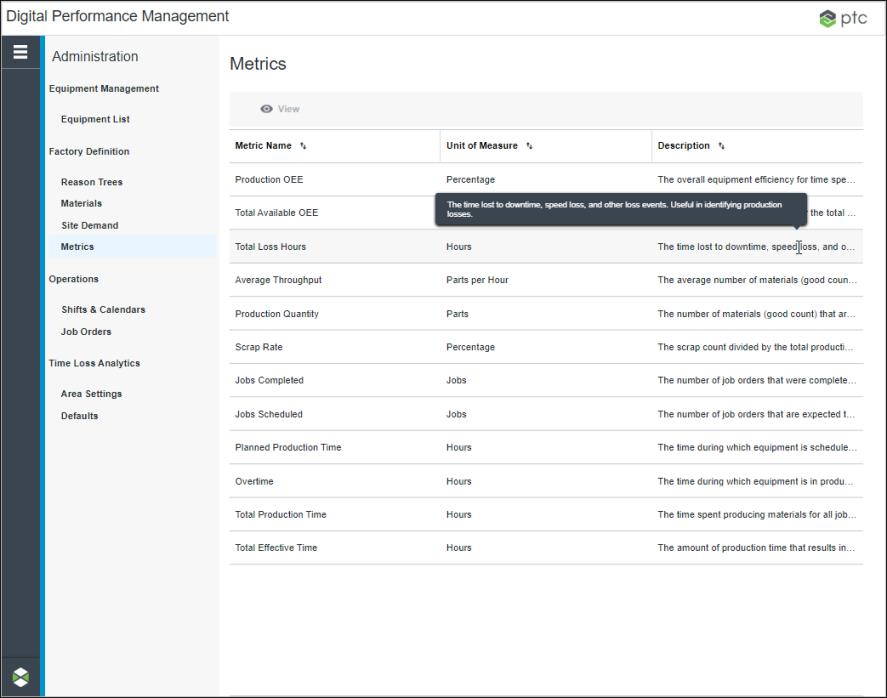Metrics
A metric is a key performance index that is used to analyze and track the performance of one or more pieces of equipment. The Scorecard tool uses metrics to display operational and performance data for work centers. For the complete list of metrics, see Metrics List.
You can access this page by clicking Metrics from the Administration navigation menu.

Depending on the metric, performance can be measured in percentage, hours, parts per hour, parts, or jobs. The performance of each metric is rolled-up to the equipment level that is selected for analysis.
On the Metrics page, you can view the metrics that are defined for use in Scorecard tool. The information on this page is read-only. To view a metric, select the metric and click View. You can sort the list of metrics on any column.
The following table lists and describes the metrics:
Metric | Description |
|---|---|
Production OEE | The overall equipment efficiency for time spent in production. |
Total Available OEE | The overall equipment efficiency for the total time that is available for production. |
Total Loss Hours | The time lost to downtime, speed loss, and other loss events. Useful in identifying production losses. |
Average Throughput | The average number of materials (good count) that is produced in an hour for all the selected equipment. Useful in quantifying impacts on revenue and production efficiency. |
Production Quantity | The number of materials (good count) that are produced for all job orders. Meaningful to users who are looking to meet production goals. |
Scrap Rate | The scrap count divided by the total production count (good count plus scrap count). Useful in understanding the amount of wasted or scrapped production. |
Jobs Completed | The number of job orders that were completed during a given date range. Useful for understanding equipment capacity at a high level. |
Jobs Scheduled | The number of job orders that are expected to be completed during a given date range. These are any job orders that are scheduled (have a planned end date) during the date range and any job orders that are completed during the date range. Useful for comparing the number of expected job orders with the number of completed job orders. |
Planned Production Time | The time during which equipment is scheduled to be in production, that is, the time during shifts which are not designated as overtime. Useful for understanding the amount of time that equipment is expected to be in production. |
Overtime | The time during which equipment is in production outside of a scheduled shift, and any shift that is designated as overtime. Useful in understanding the amount of work that is done outside of planned production. |
Total Production Time | The time spent producing materials for all job orders. Useful in understanding that total time that is used for production. |
Total Effective Time | The amount of production time that results in good materials. Useful in understanding how effective production is by identifying the amount of time that is efficiently spent. |